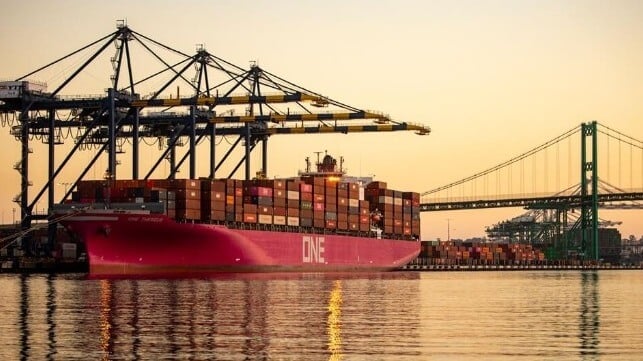Blank Sailings Hit New Record Response to Tariff Pressure

The latest data from consultancy Project44 shows that blank sailings have surged to new heights as demand on U.S.-China routes has fallen. The blanks for October are on track to exceed levels seen during the early months of the COVID-19 pandemic, when consumer demand in the West cratered and imports fell off quickly.
The "Liberation Day" tariff rollout is largely responsible for this month's drop, the consultancy believes. The number of blank sailings has been on the rise throughout the year, and has been concentrated on trade lanes most affected by tariffs. Volumes have risen and fallen on a weekly or monthly basis in line with the tariff cost of importation, which has fluctuated dramatically, but overall net trade volumes remain the same as last year. Any shifts in sourcing out of high-tariff countries (China) may take years to fully appear, Project44 predicts; for now, the overall proportions of East-West trade remain about the same, and the cost of the tariffs is being divided up between manufacturers, importers and end users.
On China-to-U.S. routes alone, there are currently 67 planned blank sailings, according to Project44. China-USWC blanks are up 46 percent year-over-year, and SE Asia-USWC blanks are up by 41 percent. (In the other direction, USWC-SE Asia blanks are up 75 percent.) "These lanes remain among the heaviest trafficked in the world, and the surge in cancellations underscores how carriers are managing weaker U.S. import demand and adjusting for uncertainty created by ongoing tariff measures," the consultancy noted.
The pattern suggests a twofold response to tariff pressures: cuts on the high-volume transpacific services to support rates, and cuts on U.S. export services to match. Export volume from the U.S. to China is down about 40 percent year-over-year, and has been consistently low throughout 2025.
“Carriers are blanking sailings at an intensity we haven’t seen since the early pandemic period. The strategy is less about crisis response this time and more about maintaining rate stability in a tariff-distorted market," said Project44 researcher Bart De Myunck.
